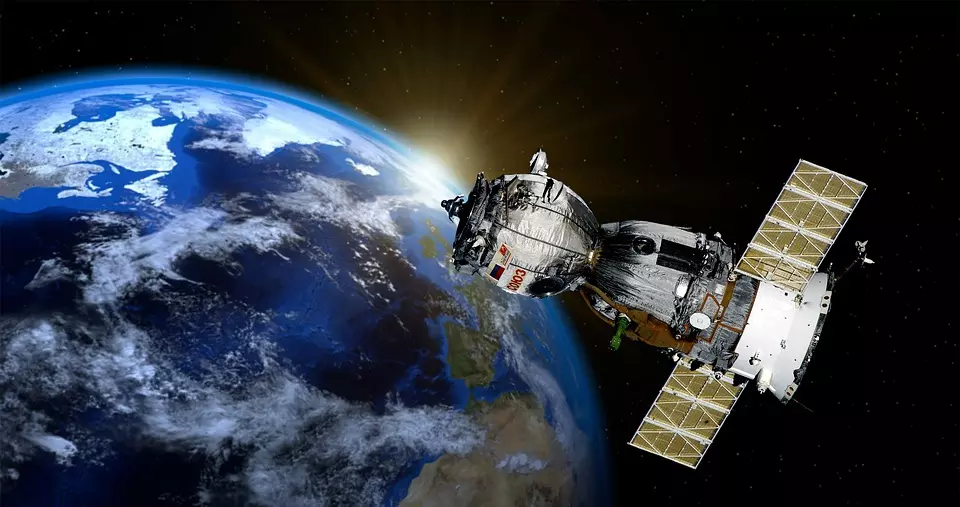
NavIC, unsung hero of Operation Sindoor, faces critical operational challenges
Only four out of a constellation of 11 satellites are currently able to transmit data on both of its frequency bands – L5 (1176.45 MHz) and S bands (2492.028 MHz)

An unsung hero of India’s Operation Sindoor against Pakistan is teetering on the edge – it is a problem which, if left unattended, could impact its armed forces.
The country's indigenous satellite navigation system, called NavIC (Navigation with Indian Constellation) played a crucial role in the combat operation in the first week of May by providing highly accurate positional information for missile guidance and drone navigation with its 10-20 centimetre accuracy.
Unlike the Kargil War of 1999, when the United States denied the Indian Armed Forces use of its Global Positioning System (GPS), India, this time, did not have to depend on any foreign-owned navigation signals.
Also read: How ISRO-NASA’s NISAR satellite will revolutionise earth monitoring from space
Only 4 satellites fully functioning
The strategic system is, however, facing crippling challenges with only four out of a constellation of 11 satellites currently able to transmit data on both frequency bands – L5 (1176.45 MHz) and S band (2492.028 MHz).
In the remaining seven satellites, only the L5 band is functioning. The robustness of both bands is essential to make the system more accurate and reliable, said sources privy to the problems the NavIC is currently encountering.
“As of now, 11 satellites have been put in orbit. Some of them are not functioning. At present, four satellites are providing position, navigation and timing (PNT) services, four satellites are being used for one way message broadcast, one satellite got decommissioned after its end-of-life service while two satellites could not reach the intended orbit,” Union Minister of State (Independent Charge) for Science and Technology, Dr Jitendra Singh, informed the Lok Sabha during the ongoing Monsoon Session.
Also read: India needs to triple satellites in orbit in next 3 years, says ISRO chief
Experts anticipate major setbacks
Of the four operational satellites, one (RNSS-1B) has already crossed its planned 10-year lifespan and could stop functioning any time, sources said. Another (IRNSS-1F) is also approaching the end of its service life and has experienced partial equipment failure.
The system is developed and maintained by the Indian Space Research Organisation (ISRO).
As per the space agency's own benchmark, the optimum functioning of the NavIC requires at least five to seven fully operational satellites.
Also read: India looks full of ambition from space: Shubhanshu Shukla in ISS farewell speech
Giving insight into the development, Lt Col (retired) V S Velan said the four functional satellites are managing the operational needs of the NavIC, adding in the same breath that India’s indigenous-navigation-system push to replace the GPS could suffer a major setback if replacements are not made immediately.
Velan was one of the members of the Integrated Space Cell, which the defence ministry set up in 2010 to explore the navigation needs of the armed forces, an initiative that eventually led to the development of the NavIC project.
ISRO plans to fix issue
The ISRO is trying to fly three satellites to augment the system. “NVS-03 is planned to be launched by the end of 2025. Subsequently, with a gap of six months, NVS-04 and NVS-05 are planned to be launched,” the minister said.
Also read: 10 things PM Modi said about Operation Sindoor in Lok Sabha
Experts, though, are not very optimistic about the ISRO meeting the timeline, given the organisation’s not-so-impressive recent track record of launching navigation satellites.
It launched NVS-01 in May 2023, while NVS-02 was launched in January 2025. The latter failed to reach the designated orbit. Another subsequent navigation-satellite launch of the ISRO also failed this year.
Also read: Ex-envoy Rajamony questions India's diplomatic success after Op Sindoor
“Ideally a navigation satellite, which is much lighter than its communication counterpart, should be built and ready for launch within six months,” Velan told The Federal. His Bengaluru-based Elena Geo Systems Pvt Ltd provides end-to-end hardware and software components to India's indigenous navigation satellite system.
Concern over navigation satellite glitches
He further raised concerns over the frequent failures in launching navigation satellites and called for a thorough investigation to determine the causes and fix accountability.
India, for long, has been trying to expand the use of NavIC for military as well as civilian purposes. It also launched the National Geospatial Policy in 2022 towards this goal. But despite the initiative, there appears to be a strange policy reluctance to reduce the GPS dependency, particularly in civilian use.
“The NavIC is designed to provide positioning, timing, messaging, restricted service (for military use only), and navigation services. But strangely, as of now, only positioning service is used generally,” Velan added.
The government’s attempt to install NavIC-guided real-time tracking in 12,000 trains failed to achieve the target. Though the Indian Railways officially claims around 8,700 trains are equipped with NavIC, sources said none of them are using India’s home-made navigation system.

